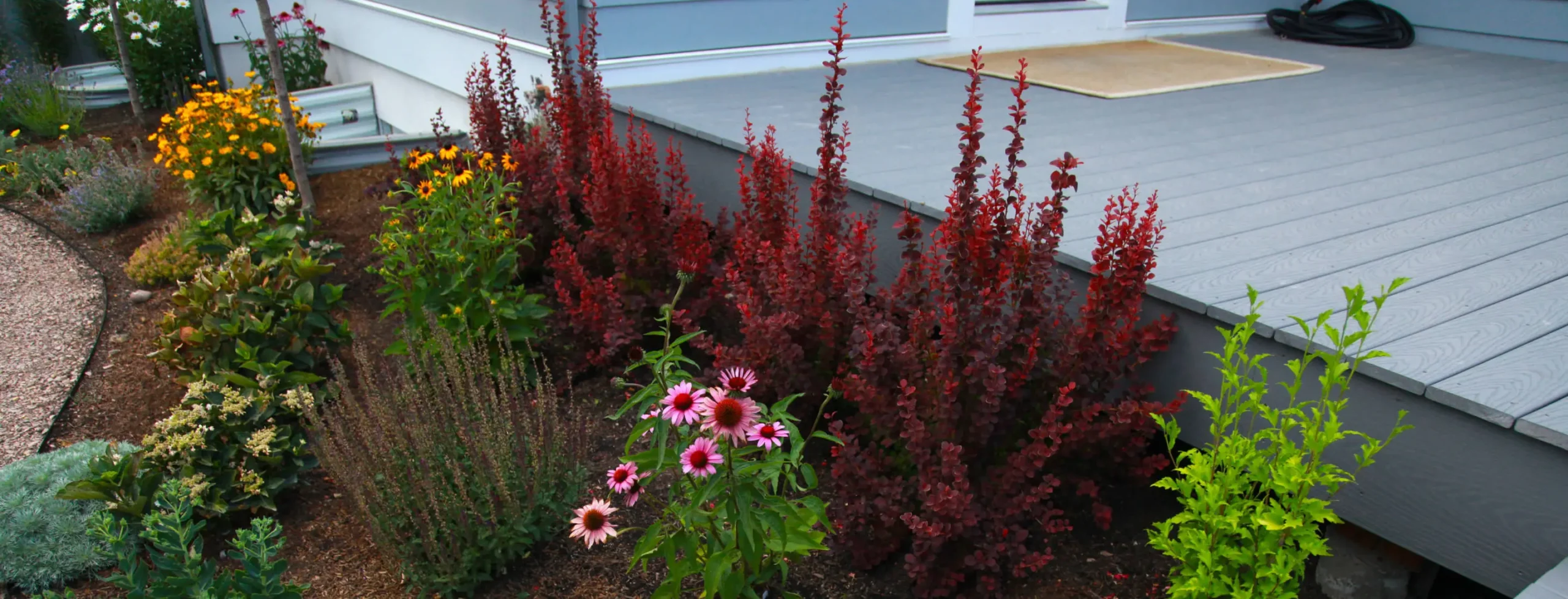
Design Your Landscape Like a Pro
Replace your grass with a beautiful landscape of waterwise, low-maintenence plants that thrive in Utah using the resources below.
Sign Up for Localscapes Classes
Looking for extra guidance on local waterwise plants? Sign up for free classes from Localscapes and learn from a Utah-based expert on native landscaping who can help you design a truly beautiful look for your yard.
Select Your Own Plants
Replacing grass with beautiful plants more suited to Utah’s climate is a win-win for the environment and your future water bills. You can maximize the success of the project by doing your homework before you hit the nursery.
These local plant lists can help you get started:
Annuals for Utah Gardens
Utah State University
Waterwise Plant Lists for Salt Lake City
Salt Lake City Public Utilities
Native Plants for the Intermountain West
University of Wyoming
Tree Browser
Utah State University
Plants in the Garden
Weber Basin Water Conservancy District
Conservation Garden Park Plant Database
Jordan Valley Water Conservancy District
Plant List
Central Water Conservancy District
Choosing what plants you want to use is step one to creating a beautiful waterwise landscape. These other design considerations from Utah State University’s Extension Office can help you know where to place your plants:
- Fit and Function: Plants can be used to conserve energy or water, block undesirable views or noise (dense plant material), control erosion on steep slopes (lower growing ground covers) and attract birds, butterflies and bees. Think about your goals for your landscape as you choose what plants go where.
- Choose Adapted Plants: Use plant species that are adapted to the landscape environment—the soil, water, temperature, light, and pest conditions—to help minimize maintenance and water requirements. This does not necessarily mean that water-wise landscapes are composed entirely of native plants. There are many plants from other dry regions around the world that are well-adapted to suit the low-water requirements of our region.
- Hydrozones: Grouping plants according to their water needs allows for more efficient irrigation as plants are less likely to be over or under-watered. Also, remember that smaller plants tend to have lower water requirements than
larger plants.
- Seasonal Interest: Think about the timing of the foliage, bloom and seed head displays of the planting material to ensure interest year round. Try to Incorporate spring, summer and fall interest in each planting group so that no place in the landscape looks bare.
- Hardiness Zone: Use plants that will survive in our climate. Plant hardiness zones in Utah range from 4-9. The hardiness zones were established by the USDA and are based on the minimum, annual survival temperatures for plants. Contact your local Utah State University County Extension office or go to the USDA Plant Hardiness Website to learn the hardiness zone of your area.
